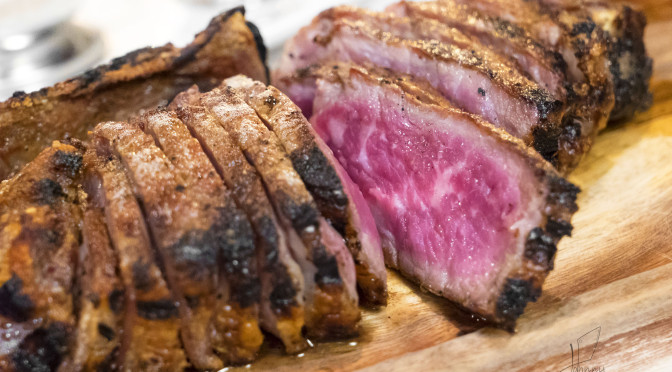If you dine out often in this great city, you’ve no doubt seen the name Pat LaFrieda featured prominently, in bold or italics, beside some of the best beef offerings at the finest restaurants.
The name has become synonymous with top notch quality beef, along with other proteins like lamb, poultry, game and pork. Personally, I can vouch for this. Many of my favorite dry-aged, high end cuts of steak and delicious burger grinds come from LaFrieda. In fact, the best steak I’ve ever had in my life was a LaFrieda tomahawk from Osteria Morini, and I’ve eaten a lot of fucking steak!
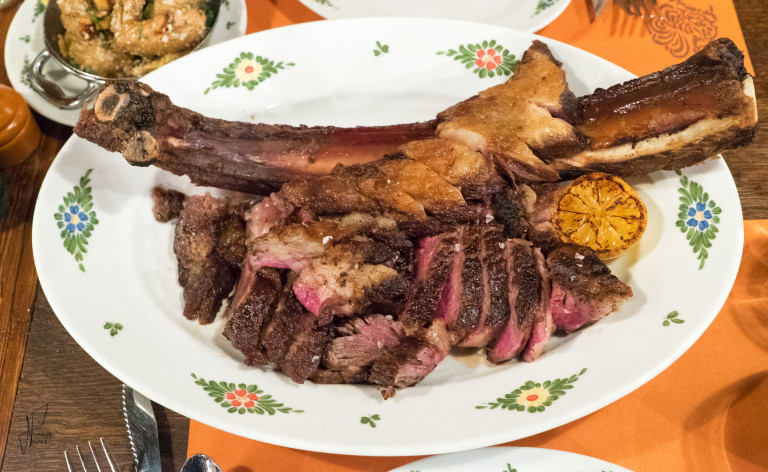
Currently, the LaFrieda business is a 36,000 square foot processing facility in New Jersey that ultimately feeds 300,000 carnivores a day. But it wasn’t always like that. So, what happened, and what makes LaFrieda beef so great?
History
Like all great success stories, LaFrieda’s started with a vision. Or perhaps it was a lack of vision, to be precise. You see, in late 1800’s Naples, a young Anthony LaFrieda was popped in the face during a street fight, resulting in a black eye. A butcher came out of his shop from nearby and slapped a cold steak over Anthony’s eye to soothe the pain. But that butcher ended up giving Anthony a job, and that’s when the family business took root.
Anthony learned the art of butchery in Italy and brought it with him to the US in 1909. Eventually he opened a meat shop in Brooklyn, 1922. He ran it with his five sons, Pat (the first) being one of them. They began servicing restaurants in the 1950’s with a shop in Manhattan’s meatpacking district, and in 1964 Pat and his son (Pat the second) took ownership of the business, calling it Pat LaFrieda Meat Purveyors.
The business grew, and the shop changed locations a few times throughout the west village, eventually landing at Leroy Street for 30 years, starting in the 1980’s. It was there that Pat the third, age 12, began to learn his family’s trade, thereby carrying the business from great grandfather, to grandfather, to father, to son; a four generation meat dynasty!
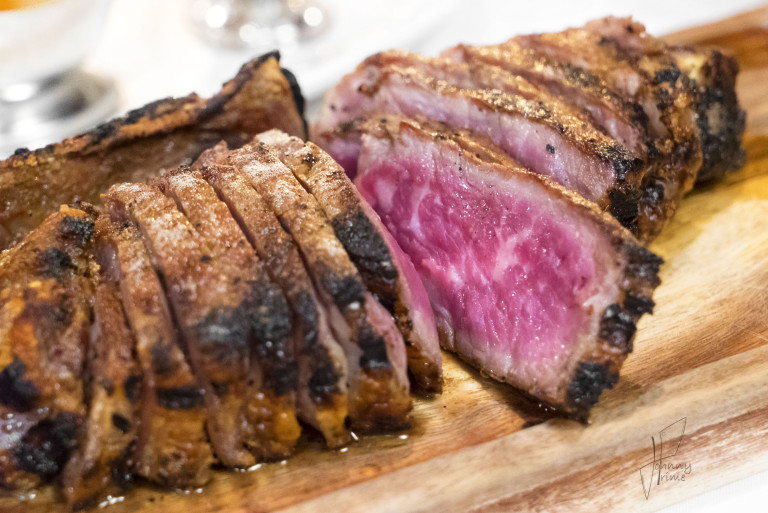
The Business Today
Pat the third’s vision for the business was a bit different than his elders. He wanted to work directly with restaurants to provide them with the best product, trimmed and portioned exactly to their specifications. He even went so far as to begin creating custom burger blends for his customers. He wanted to help restaurants develop products that showcased their chef’s talents, and to treat restaurant customers as if they were also LaFrieda customers.
It worked. This concept made the Pat LaFrieda Meat Purveyors brand a highly sought after commodity among the NYC restaurant elite. But the meat isn’t only relegated to high-priced steakhouses and fancy “white table cloth” joints. You can find Pat LaFrieda custom burger blends and steaks all over the place, from bars to neighborhood mom and pop shops. The concept that Pat the third created allows for all kinds of budgets, since custom portioning and cutting is the specialty.
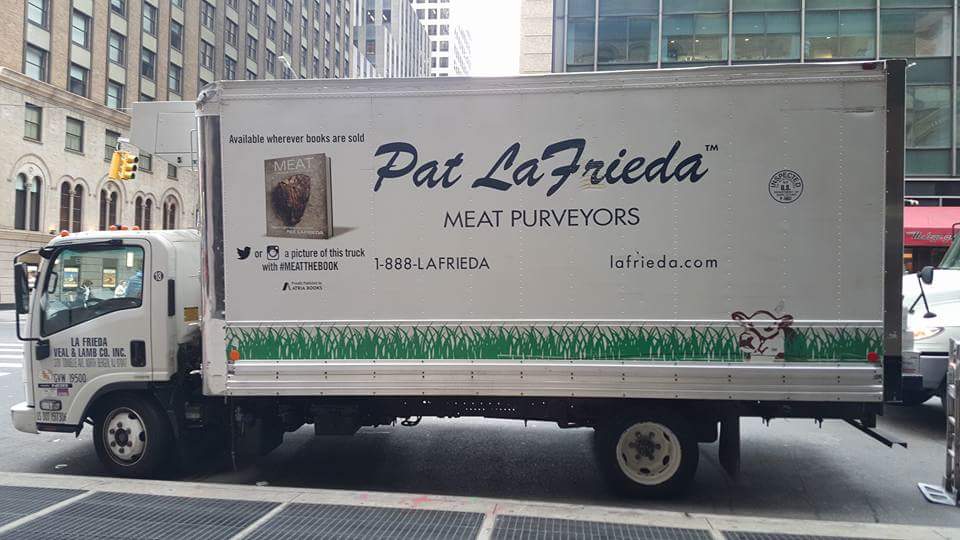
I mentioned earlier that the operation is now run out of Jersey in a large facility. Well, there, LaFrieda has a full aging room on site, with over 5,000 primals aging at any given time. LaFrieda supplies both choice and prime beef, and grinds upwards of 50 unique burger blends every day. In fact, LaFrieda grinds out 75,000 burger patties every day, in all different sizes, including all different proteins, and within all different niche markets (like organic, all natural, grass-finished, etc.). Amazing.

But LaFrieda beef isn’t only just for bars, restaurants and hotels. Pat the third stays true to his great grandfather Anthony’s original butcher shop business model, as you can order directly from their website for home delivery. In fact a friend of mine just recently ordered up and grilled a bunch of rib eyes for a party he hosted.
I did the same as well, actually. It was tremendous. Take a look HERE, as I documented the whole thing.
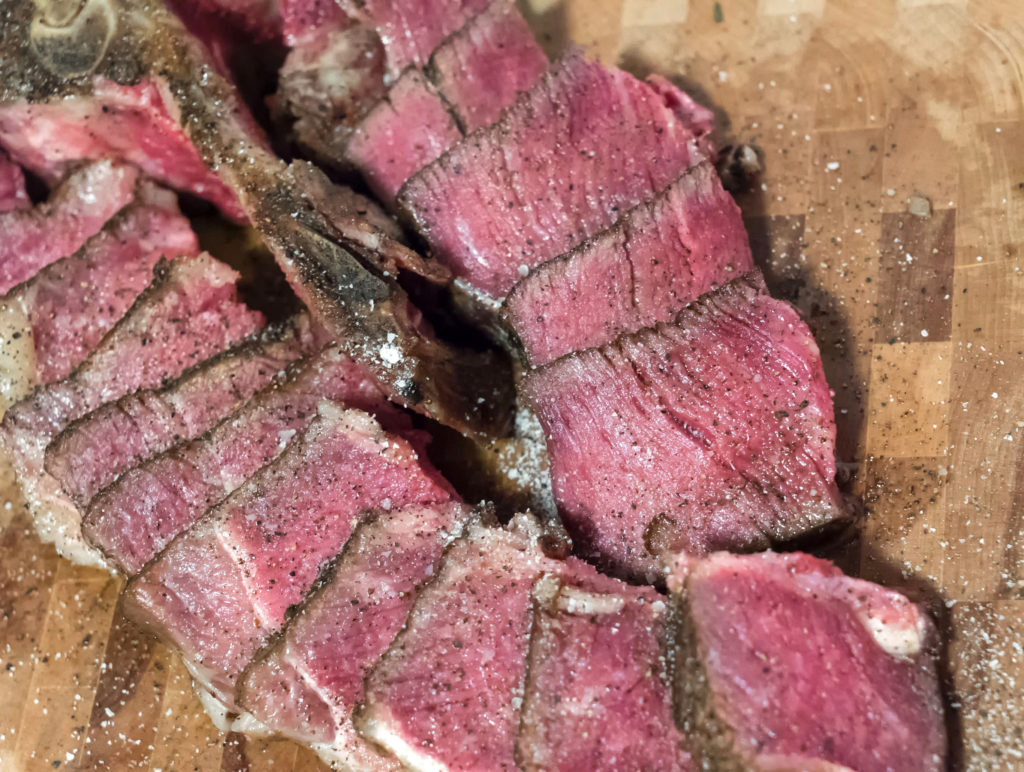
Sourcing
LaFrieda currently works with small farms and processors from all around the country to acquire the best meats from the best producers. As my “Meet Your Meat” series continues and develops, I will be featuring some of these farms in similar articles. My goal here is to provide you meat maniacs with a better understanding of where your food comes from, from feed to food, so to speak.
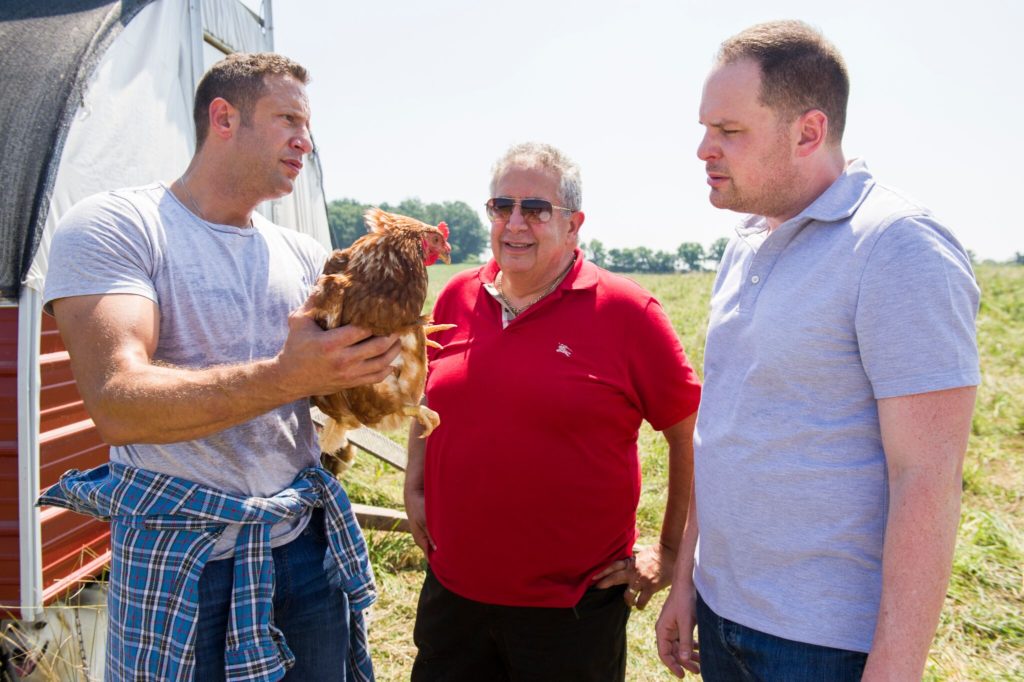
Interview with Pat
I had the pleasure of communicating with Pat via email before publishing this article, and it made for some interesting Q&A. Take a gander below:
Me: Okay, first, some more serious questions. I have this romanticized notion in my mind that you get to hang around beef and taste steak all day long while beautiful maidens fan you and feed you grapes. But deep down I know it can’t be beautiful and dreamy like that. So what is a typical work day like for you?
Pat: Johnny, that is a great question and one that is asked often. When I first joined the family business, my Dad began his day at 3am every morning. Although that sounds early, in order to grow and maintain the customers that we already had, I changed our start time a little earlier every so often. The way NYC works for a chef is a logistical nightmare. With storage space being so tight, chefs normally wait until after dinner service to place their order for the next morning, roughly at 10 pm. Most restaurants want their delivery before 9 am. In between the time that a chef orders and the time of delivery, the butcher needs to translate the order into a computerized system, custom portion whatever was ordered, weigh, package, load and invoice the restaurant before sending the order off in a delivery truck, into the Hell of NYC traffic. That all boils down to me beginning my day at 3pm, running the labyrinth I just described until 5am. Never wanting to disrespect my Dad, I never asked him to start his day any earlier so my last two hours at work are the most pleasurable, being that they overlap with his. A beautiful maiden offering grapes he is not, but funny he is.
Me: I’ve always joked that I must have been a butcher in a past life or something, given how fascinated I am with the art and skill of it. But I’ve actually heard that being a butcher is really difficult work with odd hours. I suppose like any career, there are challenges and rewards. While your current business is much different from the shop your great grandfather opened, what are some of the challenges and rewards you’ve experienced in your lifetime of butchery, processing and meat purveying?
Pat: Space, was always the biggest challenge and it came in more than one form. For storage and portioning meat, we were always tight for space. As our expansion increased from the mid-nineties, real estate prices began to soar so butchers had to operate within the space that we had. Growth was great, but it made our quality of life worse because there was nowhere to put our inventory after a short few years. The thought of leaving Manhattan was a nightmare, but when the city put a bicycle lane through our loading area, we knew it was time to build a new facility out of the city. Another form that space takes is the worst part of the meat business and that’s the time between when we need to pay our farmers and the time in which our customers pay us. The gap is so vast, it would put most out of business faster than we got parking tickets in the bus lane of our loading zone.
Me: I’m always trying to give my readers a better understanding of where their food comes from. What are some of the farms you deal with when sourcing the meat that you process? Anything local or big-name that us steak aficionados might know?
Pat: Long before the recent political campaign, we have always preached to buy domestic, yes, product that is raised and grazed in America. We have the safest meat supply in the world and since meat is one of our last natural resources, with manufacturing jobs plummeting, why would Americas not want to preserve that? I believe that “Local” is a gimmick however. In NYC for instance, NY State does not grow beef anywhere near as good as Kansas, so why would I want to pedal that garbage to prestigious NYC institutions that count on an amazing experience to survive. As for other meat, like rabbits, there is no place better than NY State to source them. That is how we base our sourcing, locating the best in class for each category as long as it’s domestic.
Me: How often do you interact with the farmers who actually raise the animals or run the feedlots?
Pat: We work very close with farmers for our sourcing. My cousin is in Dodge City right now as I write this, to ensure that our product is humanely handled, properly raised and finished.
Me: I’m a huge fan of dry-aging beef because the process concentrates flavor and increases tenderness, along with adding earthiness. Often we see steaks that were aged for 28-35 days on menus, but some places tout steaks that are aged upwards of 100 days like they are delicacies. Is 28-35 days a sweet spot for how long the beef should age, and is there any downside to aging for longer periods of time aside from the normal loss of weight that happens from the dry-aging process?
Pat: We age up to 120 days. As long as the humidity is controlled, the temperature is constant and the air circulation is vast, the meat will not rot. After 120 days, diminishing returns will begin to effect the product in that the funk of the dry age gets a bit bitter. 28 days is the young side of the range and is very universal whereas 120 days is the far end and is intended for those who have acquired the pallet for such.
Me: Okay now some fun stuff. There’s an old myth that a butcher’s favorite steak is the hanger, or “butcher’s steak,” as it is aptly called. Is there any truth to that, and what is your favorite cut? Dad’s, grandfather’s and great Grandfather’s favorite cuts?
Pat: Hanger was a butcher’s favorite because it is the only muscle in the animal that must get removed first before the animal is split. It is not symmetrical so before today’s practice of removing it first, the net result would be an ugly steak that only the butcher would eat because it was not appealing to the public back then. My family’s favorite cut has always been Outside Skirt steak.
Me: Are you like me, in that beef is your favorite meat protein? If not, which is your favorite?
Pat: Beef for sure because it is universal in cooking, with Lamb close behind.
Me: How often would you say that you eat red meat or beef?
Pat: I eat red meat daily. It is an amazing source of protein and crucial vitamins, it was intended by nature for us to eat and I happen to have a decent amount of it at any given time.
Me: Do you have a favorite steakhouse, or place to eat steak when not making your own?
Pat: I’m often asked to pick a favorite restaurant and from the bottom of my heart, I mean what I say when I answer that it truly depends on where I’m standing when I’m hungry, what my pallet is desiring at that moment and the friends that I’m with at that time. If you let that be your guide, you will have many favorites as I do.
Me: And finally, your Sophie’s Choice moment: If you could only have one for the rest of your life, would it be a burger or a steak?
Pat: I had to think long and hard on this one. In my lifetime, I could have answered this question differently every week depending on my last experience before being asked. A few days ago, I would have responded STEAK because I just had a great one at Benjamin’s, then our corporate chef made me a truffle burger yesterday that has had me hungry for another ever since, so because you are asking me today, it’s all about the BURGER.

